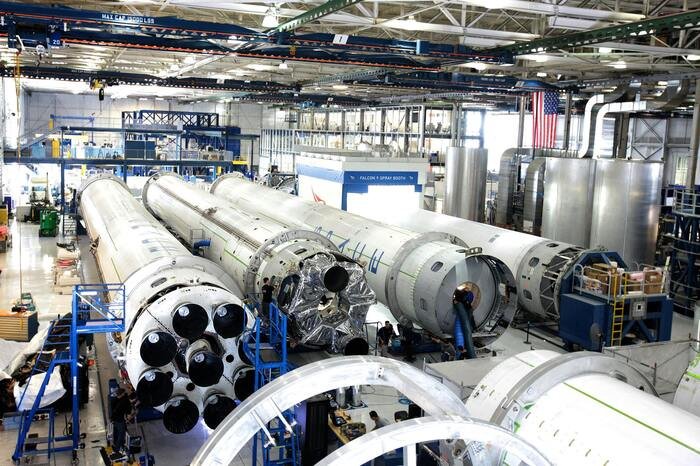 Introduction: The Energy Transition’s Missing Link
Introduction: The Energy Transition’s Missing Link
The global energy landscape is undergoing its most radical transformation since the Industrial Revolution. With 84% of global CO₂ emissions tied to fossil fuels (Our World in Data, 2023), nations are urgently seeking alternatives to decarbonize “hard-to-abate” sectors like steel, shipping, and aviation. Enter green hydrogen—the Swiss Army knife of clean energy solutions.
Why This Matters Now
- $2.5 trillion: Projected global hydrogen market size by 2050 (McKinsey, 2023)
- 30%: Portion of global emissions that hydrogen could eliminate (Hydrogen Council, 2023)
- 76 countries have formal hydrogen strategies as of 2023, up from 3 in 2019
The Hydrogen Color Spectrum: From Gray to Green
Hydrogen’s environmental impact depends entirely on its production method. Here’s the full breakdown:
1. Gray Hydrogen
- Production: Steam Methane Reforming (SMR) of natural gas
- Emissions: 9-12 tons CO₂ per ton of H₂
- Cost: $1.00-1.80/kg
- Market Share: 95% of current production
2. Blue Hydrogen
- Production: SMR + Carbon Capture & Storage (CCS)
- Emissions: 1-5 tons CO₂ per ton of H₂ (50-90% captured)
- Cost: $1.50-2.50/kg
- Example: Norway’s Northern Lights Project
3. Green Hydrogen
- Production: Electrolysis powered by 100% renewables
- Emissions: Zero
- Cost: 3.00−6.00/kg(fallingto1.50-2.50 by 2030)
- Key Advantage: Only hydrogen type aligned with Paris Agreement goals
| Type | Feedstock | Energy Source | CO₂ Emissions | Cost (2030 Projection) |
|---|---|---|---|---|
| Gray | Natural Gas | Fossil Fuels | High | $1.20-1.50/kg |
| Blue | Natural Gas | Fossil + CCS | Medium | $1.80-2.20/kg |
| Green | Water | Renewables | None | $1.50-2.00/kg |
How Green Hydrogen is Made: Breaking Down Electrolysis
Green hydrogen production relies on electrolysis—splitting water (H₂O) into hydrogen (H₂) and oxygen (O₂) using renewable electricity. Here’s a technical deep dive:
The Electrolysis Process
- Water Purification: Removes minerals/impurities to protect electrolyzer membranes.
- Electrolyzer Stack:
- Anode: 2H₂O → O₂ + 4H⁺ + 4e⁻ (Oxidation)
- Cathode: 4H⁺ + 4e⁻ → 2H₂ (Reduction)
- Gas Separation: Membranes isolate H₂ from O₂.
- Compression/Storage: Hydrogen is compressed to 700 bar for transport or stored in salt caverns.
Electrolyzer Technologies Compared
| Type | Efficiency | Operating Temp | Response Time | Lifetime (Hours) |
|---|---|---|---|---|
| Alkaline (AEL) | 60-70% | 60-80°C | Slow (Minutes) | 60,000-90,000 |
| PEM | 65-75% | 50-80°C | Instant | 50,000-70,000 |
| SOEC | 80-90% | 700-800°C | Slow | 20,000-40,000 |
Innovation Spotlight:
- ITM Power’s 20MW Electrolyzer (Sheffield, UK): World’s largest PEM system (ITM Power)
- Hysata’s Capillary-Fed Electrolyzer: Claims 95% efficiency (Hysata, 2023)
Global Green Hydrogen Projects: The $500 Billion Pipeline
Over 680 large-scale projects are underway globally. Here are the most ambitious:
1. Middle East & Africa
- NEOM, Saudi Arabia: $5B plant powered by 4GW solar/wind (NEOM Hydrogen)
- Output: 1.2M tons/year green ammonia by 2026
- Namibia’s Tsau Khaeb Project: 3GW hybrid plant supplying EU
2. Europe
- North Sea Wind Power Hub: 10GW offshore wind for hydrogen production
- Germany’s H2Global: €900M initiative to import global green H₂
3. Asia-Pacific
- Australia’s Asian Renewable Energy Hub: 26GW wind/solar → 1.75M tons H₂/year
- India’s National Green Hydrogen Mission: $2.3B for 5M tons/year by 2030
4. Americas
- U.S. Hydrogen Hubs: $8B from Inflation Reduction Act for 10 regional hubs
- Chile’s HIF Global: Wind-powered e-fuels for Porsche (HIF Global)
Green Hydrogen Applications: Decarbonizing the “Impossible”
1. Steelmaking
- Problem: Traditional blast furnaces emit 1.85 tons CO₂ per ton of steel.
- Solution: Replace coking coal with green H₂ in Direct Reduced Iron (DRI)
- HYBRIT Project (Sweden): Fossil-free steel by 2026 (HYBRIT)
2. Shipping & Aviation
- Maersk’s Methanol Ships: 12 vessels running on green hydrogen-derived methanol
- Airbus ZEROe: Hydrogen-powered planes by 2035 (Airbus)
3. Energy Storage
- Surplus Renewables: Convert excess solar/wind to H₂ for later use
- Seasonal Storage: Hydrogen can be stored for months vs. batteries (hours/days)
4. Fertilizers
- Green Ammonia: BASF and Yara building plants to replace gas-based NH₃
Challenges: The Roadblocks to a Hydrogen Economy
1. Cost Barriers
| Cost Component | 2023 | 2030 (Projected) |
|---|---|---|
| Renewable Electricity | $40-60/MWh | $20-30/MWh |
| Electrolyzer CAPEX | $800/kW | $400/kW |
| Total Production Cost | $3-6/kg | $1.50-2.50/kg |
2. Infrastructure Needs
- Transport: Requires new pipelines (existing can only handle 20% H₂ blend)
- Storage: Salt caverns (e.g., Utah’s Advanced Clean Energy Storage) or liquid organic carriers
- Refueling: Only 1,000+ H₂ stations globally vs. 500,000+ EV chargers
3. Policy Gaps
- Certification: No universal standard for “green” hydrogen
- Subsidies: Most tax credits (e.g., U.S. IRA) require hourly renewable matching by 2028
The Future Outlook: 2030 and Beyond
1. Cost Projections
- Electrolyzers: Prices to fall 70% by 2030 (BNEF)
- Renewables: Solar/wind to hit $20/MWh in optimal regions
2. Technology Breakthroughs
- AI-Optimized Electrolyzers: Google’s DeepMind testing AI for catalyst discovery
- Nuclear Fusion Synergy: Helion’s fusion tech aiming to power electrolysis
3. Market Predictions
- Global Demand: 200M tons by 2030 (6x 2023 levels)
- Export Market: $300B/year by 2050 (Australia, MENA leading)
How Governments Are Accelerating Adoption
1. Policy Initiatives
- EU’s Carbon Border Tax: Penalizes imports made with gray hydrogen
- U.S. IRA: $3/kg production tax credit for green H₂
- Japan’s Basic Hydrogen Strategy: 3M tons/year imports by 2030
2. Corporate Commitments
- Shell: 2M tons/year green H₂ by 2030
- Siemens Energy: €1.2B R&D investment in electrolysis
How You Can Get Involved
- For Individuals:
- Advocate for hydrogen policies via Hydrogen Forward
- Invest in ETFs like HDRO or HJEN
- For Businesses:
- Join the Hydrogen Council
- Explore grants like the EU’s Clean Hydrogen Partnership
Conclusion: The Hydrogen Decade Begins
Green hydrogen has evolved from a niche concept to the centrepiece of global decarbonization strategies. While challenges around cost and infrastructure persist, the confluence of technological innovation, corporate investment, and policy support suggests a tipping point is near.
As Fatih Birol, Executive Director of the IEA, states:
“Hydrogen is the star of the new energy economy. With the right policies, it can help us tackle climate change while creating new industrial opportunities.”
The 2020s will be remembered as the decade when hydrogen transitioned from labs to boardrooms—and ultimately, to the backbone of a zero-emission future.



